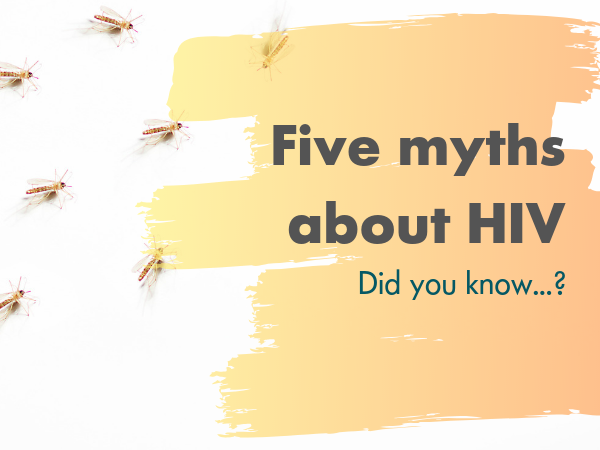
There are many myths about how HIV transmits, and most of these are based on false information. These help to keep the stigma around HIV and people living with HIV alive, so it is important that people take time to educate themselves on how HIV transmits – and not just believe the misconceptions! Some of the misconceptions can be traced back to when HIV was causing deadly epidemics in the 1980s, and unfortunately have survived until today.
Myth 1: Mosquitoes can transmit HIV
False: Mosquitoes do NOT transmit HIV. No other animals can transmit HIV to people either.
Myth 2: Sharing a toilet seat or a fork can transmit HIV
False: HIV also cannot be contracted by sharing a toilet seat or sharing any other utensil with someone who is HIV positive.
Myth 3: HIV can transmit through hugging
False: There are many forms of physical contact that do not transmit HIV. Shaking hands, hugging, kissing and touching are all examples of contact that does not transmit HIV, as saliva and skin does not carry the HIV virus.
Myth 4: The risk for HIV transmission is equally high in unprotected oral sex as it is in vaginal and anal sex
False. A common misconception is that all types of sex will carry a high risk of HIV transmission, but this is not true. During oral sex only that person has the risk who gets semen, pre-cum or vaginal fluid to their mouth. The risk is significantly smaller in oral sex compared to vaginal and anal sex.
Myth 5: A person living with HIV cannot live a healthy life
False: A person living with HIV can be as healthy as everybody else, as we have very effective medication. This means that mothers with HIV can give birth to healthy babies, which might be something a lot of people do not know, and this also means that people on effective medication can have unprotected sex and not pass on the virus
So how is HIV transmitted then?
As a rule, HIV can be transmitted through the following: during unprotected vaginal, anal and oral sex, by sharing needles and from mother to child. But remember! Undetectable = untransmittable, U=U. This means that when an HIV positive person is on effective treatment, there is no risk of transmission, ever. HIV does not transmit through saliva, sweat, skin or urine. Read more about how HIV transmits here.
